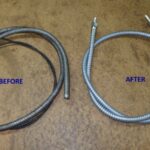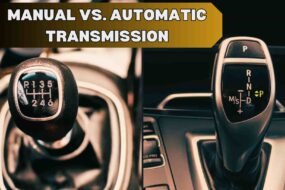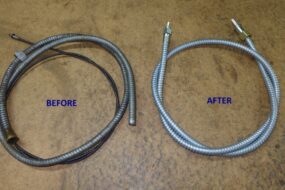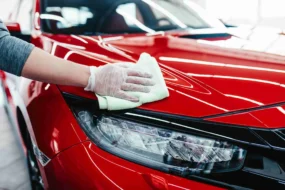A heat exchanger is used to remove heat from the engine coolant. It is made up of a series of fin passages. With the coolant channel, heat fins are given and then dissipated through the air through the fins.
On most modern cars the radiator has four side mountings and a top and bottom hose. The electric fan may be bolted to a fan cowl and enclosed, particularly on some transverse-engined cars where the radiator is mounted at the side of the engine bay.
The early cars were made of copper and copper alloys. They can be repaired by welding. But then a large number of cars, including mini-subway, with aluminum radiator core and plastic top and bottom tanks. This heatsink can be forced to the upper limit of the hose or pressure, or caution.
Home technician to repair the damage is not possible, and usually the radiator must be replaced.
Not heat the aluminum and copper, so there must be fin core, so easy to plug the dirt from the road. Hose clean at least once a year.
However, there is an advantage: Light radiators usually have simple side dishes and are easy to remove.
Disconnecting hoses and fittings on the radiator
Before you remove a radiator, check the hoses and clips. Buy replacements if the hoses are cracked or deteriorated, or if the clips are corroded. Always replace wire-type clips with screw clips.
If necessary, make notes or drawings of how all the radiator connections fit.
Apart from the top and bottom hoses, there may be pipes to an expansion tank, and electrical leads to a temperature gauge or automatic electric-fan switch, which must be disconnected.
An electric fan may be bolted to the radiator. Depending on the design, you either remove it to free the radiator, or remove it together with the radiator. Check with the car service manual.
With both electrical and mechanical fans, you may have to take off a fan cowl in order to free the radiator.
Some cars have a splash shield under the radiator, which must be removed. Cars with automatic transmission may have a gearbox oil cooler set in the bottom of the normal radiator, with screw-on unions for the oil pipes.
Disconnect the battery before starting to remove any radiator which has electrical connections. Then remove the pressure cap and drain the radiator.
Loosen hose clips and ease off the hoses by twisting them gently to and fro.
Do not try to lever off a hose with a screwdriver: you may damage both the hose and the radiator stub – particularly if the stub is plastic.
If a hose is stuck fast, slit it at the stub end with a sharp knife and renew the hose. Unfasten any electrical connections and check that they are clean and sound.
Before you unscrew any oil-pipe unions have a container ready to catch the oil. Do not use the oil again – top up the transmission with fresh oil afterwards.
Seal disconnected oil unions, both on the radiator and on the pipes, with polythene bags and rubber bands to keep out dirt.
When you refit the oil unions take great care not to get the nuts cross-threaded, and tighten them well to prevent leaks.
Unscrew the radiator mounting bolts and ease the radiator out, removing such parts as may be necessary to clear the way.
Remember the order in which you removed them, so that you can reverse the sequence when refitting Take care not to crush the soft metal radiator fins or otherwise damage them or the fan blades.
When refitting hoses, tighten the clips firmly but not too much overtightening could cause the clips to cut the hoses or crush the plastic stubs to which they are sometimes fitted
.
Sliding out a radiator
Some cars have unusual radiator mountings: look carefully all over the radiator and find where the mounting points are – they are not always obvious.
Draining the radiator
There may be a drain tap or plug at the bottom of the radiator.
Engine cold, take-off or release pressure cap radiator or in a separate tank if installed.
Some automotive taps or radiators at the bottom of the drain plug, open it and the radiator should be empty.
If there is no water flow, poke a drain plug hole gently with a wire, or unscrew to remove a faucet. If there is no tap or plug, or if you can not clear the plug with the wire, disconnect the hose at the bottom of the radiator.
Saving coolant and antifreeze reuse. Drained into a clean container, and then remove the rust or dirt through the strain before you put the cloth back.
Later, ask a garage to check the strength of the solution. Or you can check yourself if you have antifreeze hydrometers.
There may be an exhaust valve or a plug at the bottom of the radiator.
Disconnect the bottom hose if there is no drain plug or tap water.







